| June 2009: Junshik Um, Bobby Jackson, Kenny Bae, Hee-Jung Yang, Greg McFarquhar, Eric Meyers, Gong Zhang and Amanda Dooley celebrate Prof. McFarquhar's promotion to full professor at Biaggis Restaurant in Champaign. |
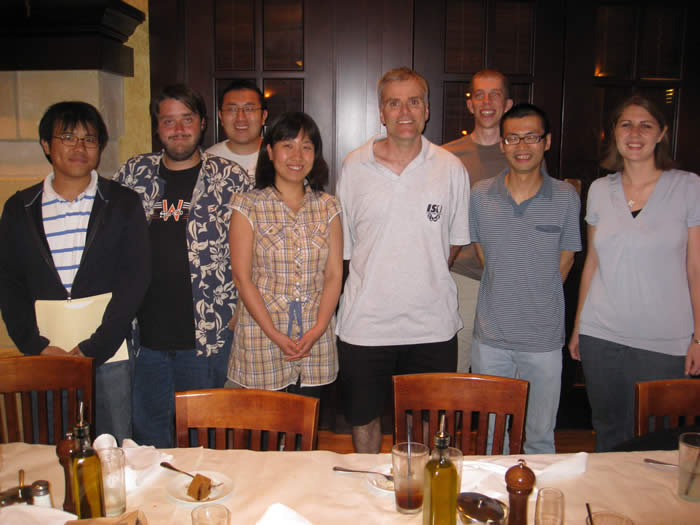 |
| July/August 2009: Prof. McFarquhar is shown in front of Terra Cotta Warriers just outside Xi'an China, during a brief break from the International Symposium on Atmospheric Light Scattering and Remote Sensing, held July 13-17 2009 in Xi'an China. |
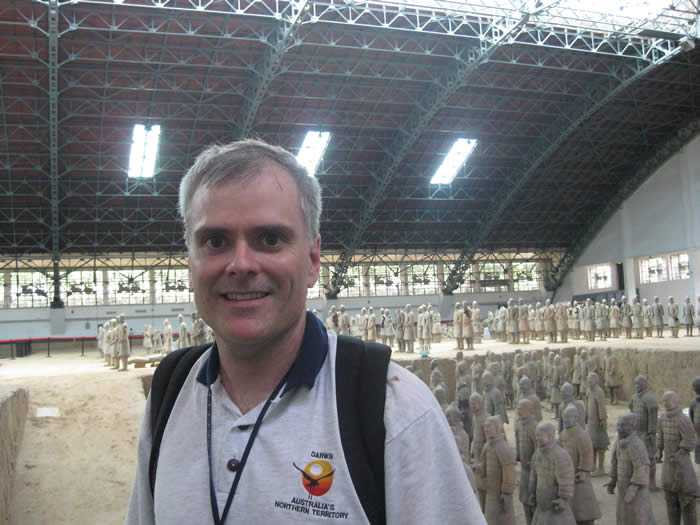 |
| Sept. 2009:
Dr. Junshik Um is seen working with the SPEC Inc. Cloud Particle Imager (CPI) in the cloud physics lab at the University of Manchester, England. Prof. McFarquhar and Dr. Um visited Manchester in August 2009 to check the calibration of the CPI, to compare the performance of the CPI against other CPIs in the cloud chamber at the University of Manchester, and to conduct an experiment on ice crystal aggregation in the cloud chamber. |
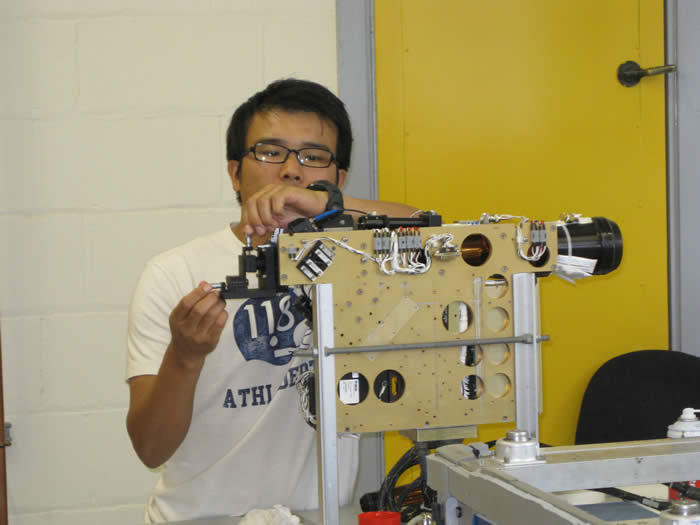 |
| February 2010: As part of the NSF-funded PLOWS field program, undergraduate students from the University of Illinois and several other mid-west universities were given the opportunity to fly on the NCAR C-130. Here, students are pictured after returning from a flight sampling winter storms. |
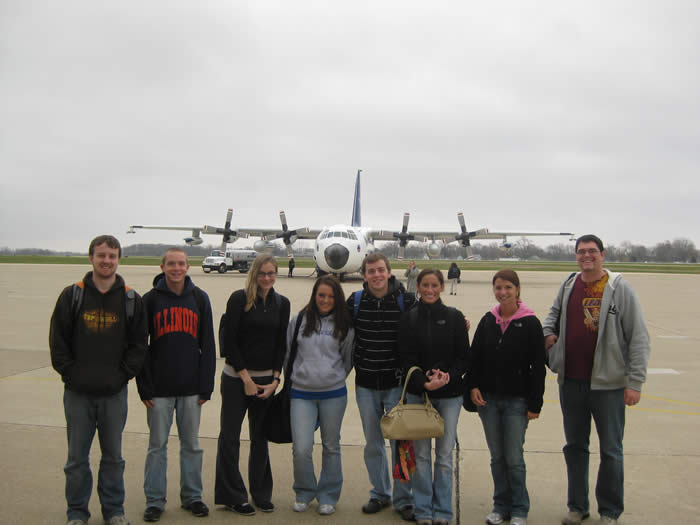 |
| Summer 2012: This month, Dr. Greg McFarquhar is seen overlooking the town of Clermont-Ferrand, France. Dr. McFarquhar spent the summer of 2012 collaborating with the group at the Universite Blaise Pascal, working on projects ranging from the microphysics of arctic clouds to the development/comparison of automated ice crystal habit recogniztion schemes, to the radiative properties of small ice crystals. |
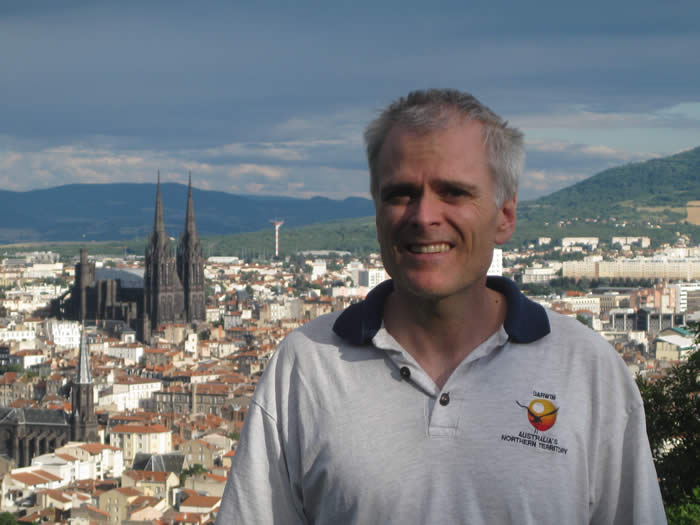 |
| February 2013:
This month, Dr. Greg McFarquhar is seen overlooking the town of Palma de Mallorca, Spain. Dr. McFarquhar attended the First Science meeting of the International Society for Atmospheric Research using Remotedly piloted aircraft at the Universitat de les Illes Balears. It is hoped that unmanned aerospace vehicles will be used in the research group in the near future, complimenting current field studies being conducted with piloted aircraft. |
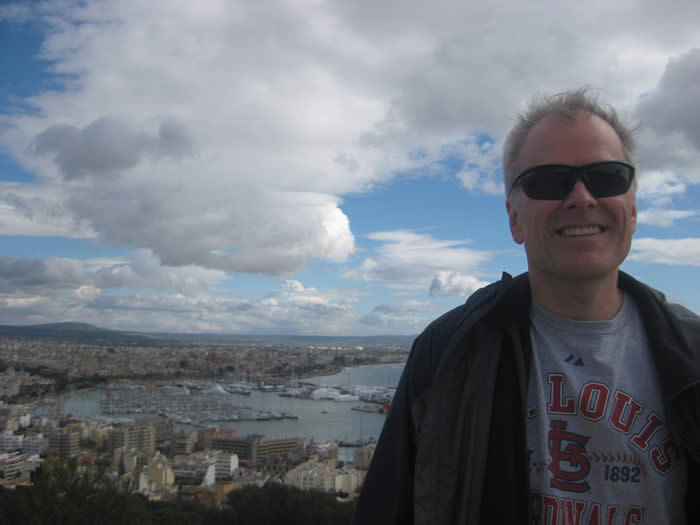 |
| July 2013:
This month, the countryside surrounding Davos, Switzerland is illlustrated. Graduate student Robert Jackson, along with Prof. Greg McFarquhar, attended the 1st International Committee on Cloud and Precipitation's Workshop on Cloud Microphysics and Ice Formation in Clouds and Precipitation in Zurich, Switzerland at the beginning of July |
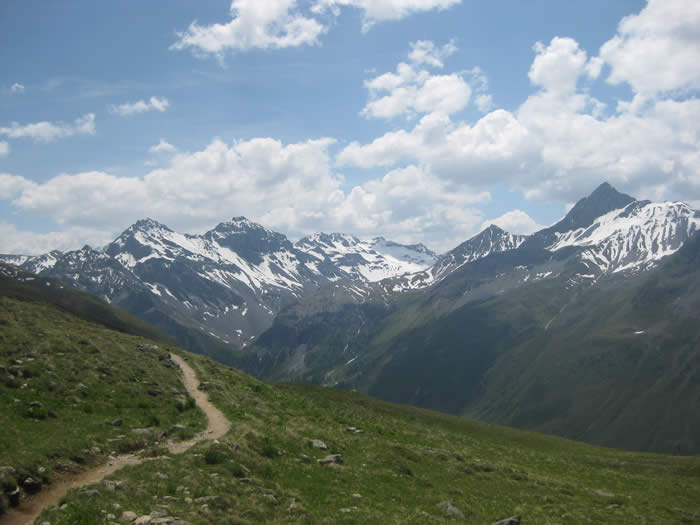 |
| October 2013:
This month, graduate student Bobby Jackson is seen in front of the National Science Foundation G-V aircraft positioned at the National Center for Atmospheric Research. Bobby is currently working on the IDEAS (Instrument Development and Education in Atmospheric Science) 2013 field project out of Boulder, Colorado. Bobby is looking at how modified probe tips and enhanced processing algorithms can reduce the influence of shattered artifacts in cloud probe data, so that we can have a better idea on the properties of clouds. |
 |
| January 2014: This month, the French Falcon 20 aircraft is shown taking off from Toulouse, France, for an instrument check flight on 18 December 2013. The Falcon will be used from January-March 2014 in a the High Ice Water Content (HIWC) field project being conducted in Darwin, Australia, that seeks to understand the physical processes responsible for the production of large numbers of small ice crystals in regions without radar echoes > 20 dBZ that can occur over tropical oceans. Prof. McFarquhar's research group is participating in HIWC, by providing ground support for the aircraft and through analysis of data to be collected in the study . |
 |
| June 2014:
This month, the Boston skyline is shown. In July 2014, the cloud physics group will travel to Boston to attend the American Meteorological Society Conference on Cloud Physics and Atmospheric Radiation. Graduate students Robert Jackson, David Plummer, Joe Finlon and Will Wu, as well as associate Junshik Um and Greg McFarquhar will make presentations at the meeting. In addition, Um, Wu, and Jackson will participate in the Workshop on Data Analysis and Presentation of Cloud Microphysical Measurements the weekend before the meeting, with McFarquhar co-leading the workshop.
|
 |
| September 2014: This month pecans are shown as it has been announced that the NOAA
P-3 aircraft will participate in The Plains Elevated Convection at
Night (PECAN) experiment, out of Wichita, Kansas from 15 June to 15
July 2015. The McFarquhar group, with funding from NSF, will measure the
phases, shapes and sizes of hydrometeors in stratiform areas of
mesoscale convective systems to determine how microphysical cooling
processes in developing and mature storms force downdraft circulations
that create gravity waves in the boundary layer that subsequently focus,
organize and maintain convective activity. |
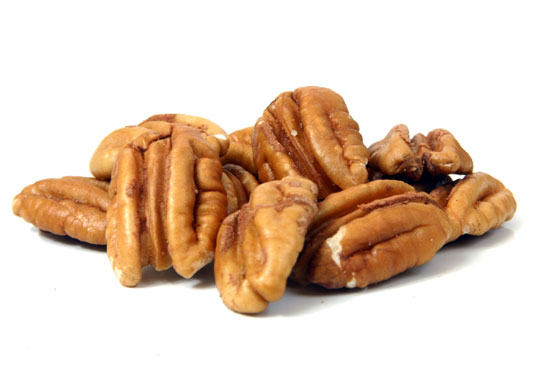
|
| January 2015: This month a MODIS image of stratocumulus clouds off the coast of Namibia, Africa are shown. Prof. McFarquhar's group, as part of the ORACLES (ObseRvations of Aerosols above CLouds and their IntEractionS) team, will participate in field projects between 2016 and 2018 designed to understand the key atmospheric processes that derive cloud-aerosol interactions in the South East Atlantic. |
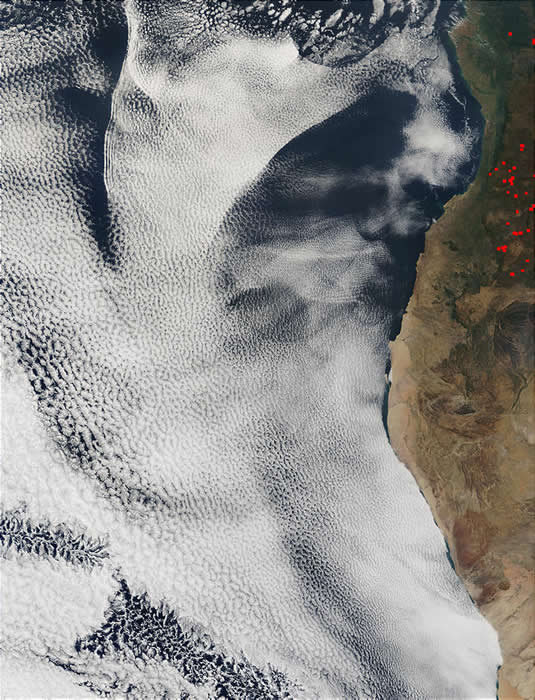 |




















